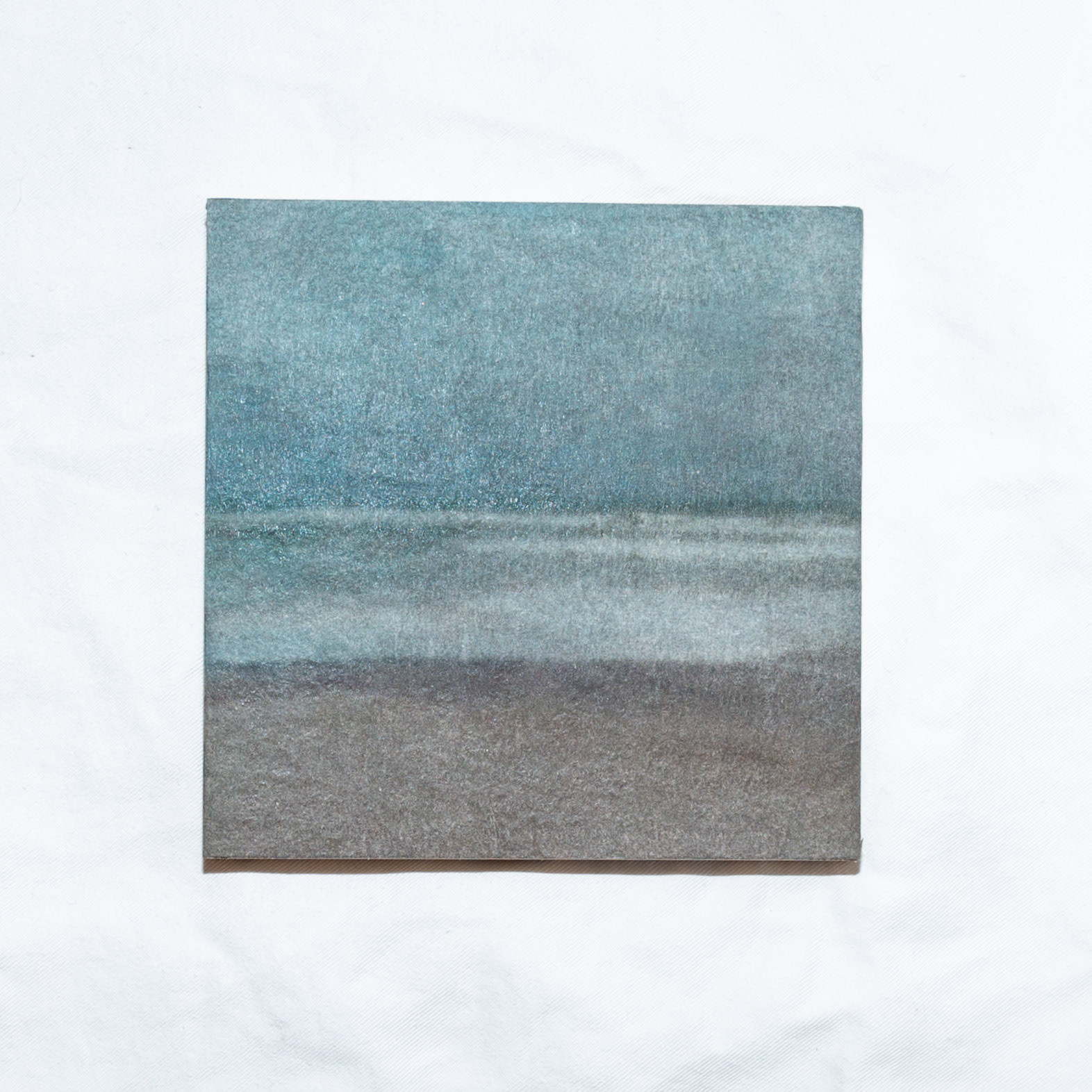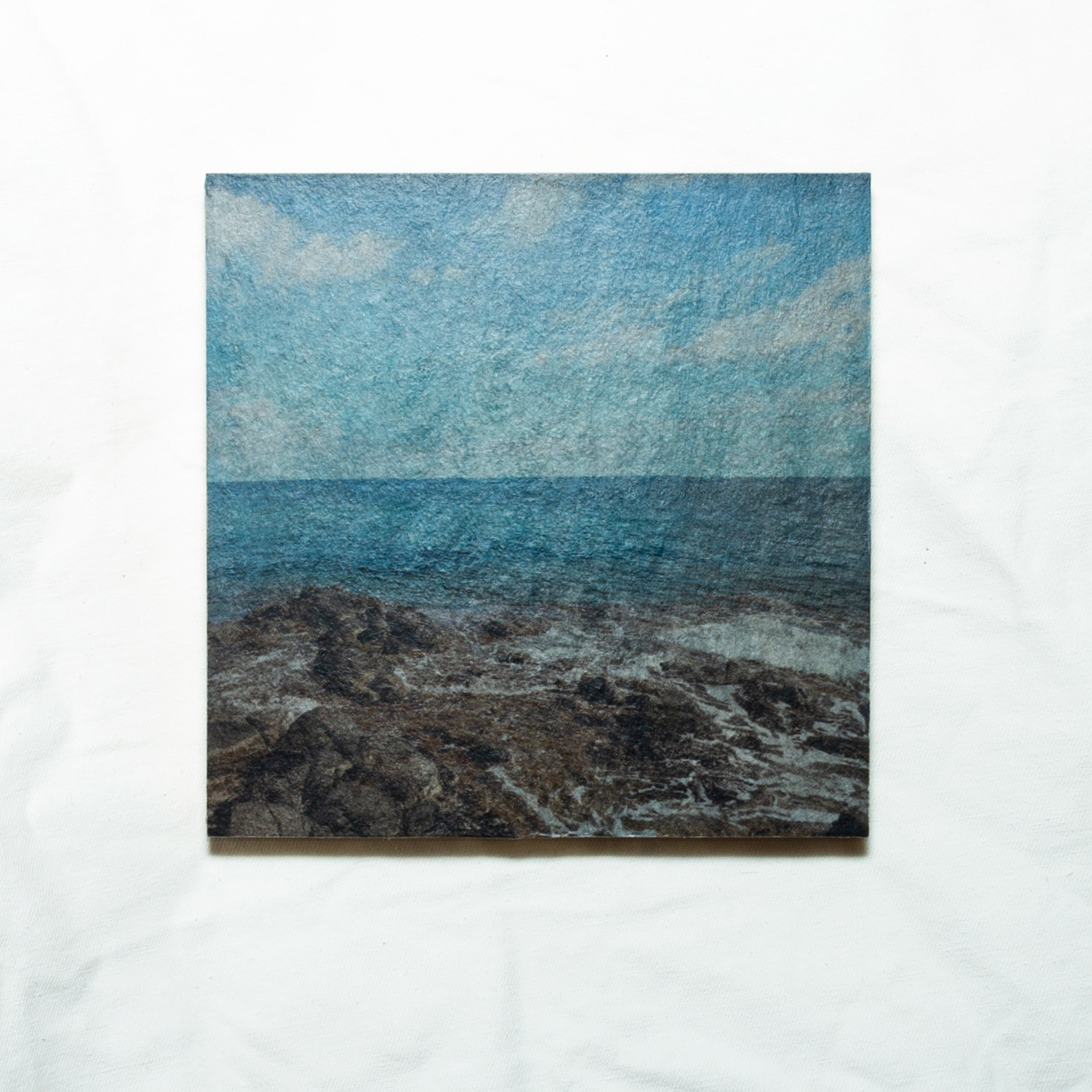



"Random Waters," is an ongoing sculptural photographic project.
In a series of physical pieces, Elizaveta looks at the culture of today's digital age and how travel has transformed into a more accessible and convenient experience. Couch travelling has become commonplace, allowing us to explore unfamiliar and random places through the simple act of dragging and dropping a yellow human icon on Google Earth. However, this ease of exploration raises some questions about the role of landscape photography and its connection to the physical process. With the click of a button, we can view breathtaking landscapes from the comfort of our homes, leaving us disconnected from the true physicality of the environment portrayed. So how do we represent these environments, in a tangible and decaying form?
In a series of physical pieces, Elizaveta looks at the culture of today's digital age and how travel has transformed into a more accessible and convenient experience. Couch travelling has become commonplace, allowing us to explore unfamiliar and random places through the simple act of dragging and dropping a yellow human icon on Google Earth. However, this ease of exploration raises some questions about the role of landscape photography and its connection to the physical process. With the click of a button, we can view breathtaking landscapes from the comfort of our homes, leaving us disconnected from the true physicality of the environment portrayed. So how do we represent these environments, in a tangible and decaying form?
In today's digital age, the concept of travel has transformed into a more accessible and convenient experience. Couch travelling has become commonplace, allowing us to explore unfamiliar and random places through the simple act of dragging and dropping a yellow human icon on Google Earth. However, this ease of exploration raises some questions about the role of landscape photography and its connection to the physical process.
As we engage in this digital exploration of remote locations, the question of the physicality of landscape photography inevitably arises. Traditionally, landscape photography was intimately linked to being physically present in the actual setting, capturing the essence and atmosphere of the scene through the lens. The tangible connection to the surroundings was an integral part of the creative process, allowing photographers to translate their personal experience and emotions onto the photograph.
In the context of unphysical expeditions, this physical connection becomes more ambiguous. With the click of a button, we can view breathtaking landscapes from the comfort of our homes, leaving us disconnected from the true physicality of the environment portrayed. This raises important questions about the depth of our engagement with these virtual representations and whether preselected scenes steal the choice of one-moment experience.
Why does the yellow icon of a human go to the water? Practically speaking, it takes an enormous amount of the map, but it is easy to forget its presence. Moreover, water is undoubtedly one of the most vital substances on the planet, playing a crucial role in sustaining life and supporting various ecosystems.
The process of the constant display of unchanged captured scenes raises environmental concerns. The unceasing demand for resources to sustain the digital infrastructure and power the non-stop accessibility of these images pushes to consider the environmental footprint of our actions. The juxtaposition of these frozen moments in time against the backdrop of the ever-changing and decaying of already gone scene forces us to confront the transience and impermanence of our surroundings.